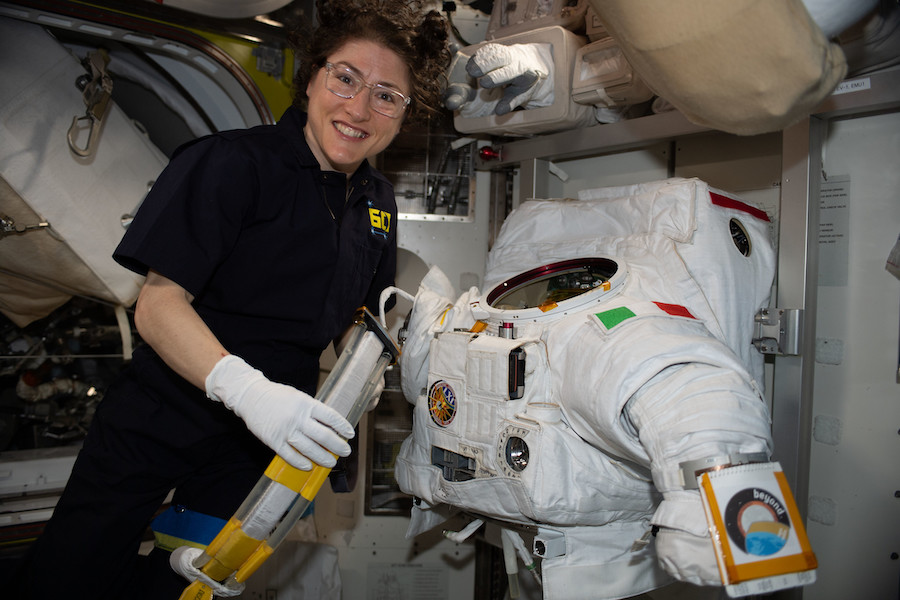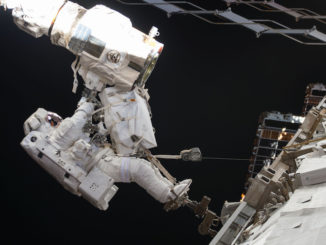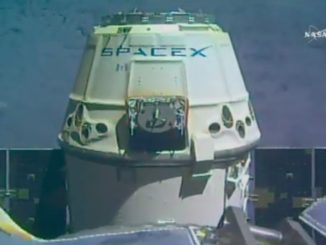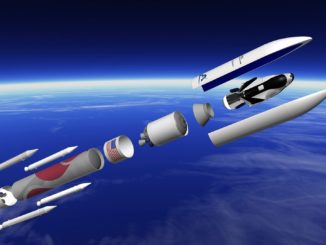EDITOR’S NOTE: Updated at 3 p.m. EST (2000 GMT) after completion of spacewalk.
STORY WRITTEN FOR CBS NEWS & USED WITH PERMISSION

Astronauts Christina Koch and Jessica Meir floated back outside the International Space Station Wednesday for history’s second all-female spacewalk, installing two powerful new lithium-ion batteries on the far left end of the lab’s solar power truss.
The pair plan another spacewalk Monday to install a final battery, completing a four-spacewalk upgrade that began last year. A final set of batteries is scheduled for installation later this year.
Floating in the station’s Quest airlock, Meir and Koch switched their spacesuits to battery power a 6:35 a.m. EST, officially kicking off the 225th excursion devoted to station assembly and maintenance. It was Meir’s second spacewalk and the fifth for Koch, who is wrapping up a record 328-day stay in space.
“Beautiful view out here, Stephanie,” Meir radioed astronaut Stephanie Wilson in mission control.
The spacewalk proceeded smoothly from start to finish with only one problem of any significance: Koch’s helmet lights and camera assembly somehow came loose shortly after the excursion began.
Meir worked with flight controllers to come up with a way to re-attach it, but in the end, they decided to simply stow the assembly and press on without it. Koch had no problems, staying relatively close to Meir and her helmet lights during orbital darkness.
Spacewalk duration was seven hours and 29 minutes.
“The … ground team would like to thank you for your work today,” Wilson radioed when the spacewalk ended. “We made great progress towards upgrading the batteries. You’re both awesome. Nice work.”
“Thank you very much Stephanie, we love working with you,” Meir replied. “And it was truly amazing for Christina and me to be back out here today. We’ve been talking about it a lot, and it was really something we were looking forward to.”
NASA is in the process of replacing all 48 of the space station’s older-generation nickel-hydrogen batteries with 24 more powerful lithium-ion units, along with circuit-completing “adapter plates” to fill in for batteries that were removed but not replaced.
The new batteries are arranged in sets of six in integrated electronics assemblies, or IEAs, at the bases of the station’s four main solar array wings. Each wing is made up of two extendable blankets of solar cells and the electricity they generate is delivered throughout the station using eight electrical buses, or channels, two per IEA.
In 2017, spacewalkers replaced the 12 right-side inboard solar array batteries with six lithium-ion units. In March 2018, the 12 left-side inboard batteries were replaced by another six LiOH batteries. NASA currently is working to replace the 12 left-side outboard batteries. The final set of lithium-ion batteries will be installed in the right-side outboard IEA later this year.
 NASA astronaut Christina Koch works with a spacesuit on the International Space Station. Credit: NASA
NASA astronaut Christina Koch works with a spacesuit on the International Space Station. Credit: NASA
Koch and astronaut Drew Morgan installed three of the left outboard array’s six lithium-ion batteries and adapter plates last Oct. 6 and 11. But shortly thereafter, engineers discovered one of the three battery charge-discharge units in that circuit had failed after 19 years of service, sidelining one of the new batteries.
Koch and Meir staged the first all-female spacewalk last Oct. 18, removing the failed BCDU and installing a replacement. The faulty unit was returned to Earth earlier this month aboard a SpaceX Cygnus cargo capsule. The device will be refurbished and re-launched on a future resupply mission.
In the meantime, with the BCDU swap-out complete, NASA managers opted to press ahead with three higher-priority spacewalks by Morgan and Luca Parmitano in November and December to repair the cooling system in a $2 billion cosmic ray detector mounted on the solar power truss. A fourth spacewalk is planned Jan. 25 to verify the repairs and to re-install insulation.
Koch and Meir were assigned to complete the left-side outboard battery replacements during another two spacewalks. During Wednesday’s excursion the astronauts, running ahead of schedule, removed four older nickel-hydrogen batteries — one more than planned — and installed two new lithium-ion units and one adapter plate.
If all goes well, Koch and Meir will finish the job Monday, removing two remaining nickel-hydrogen batteries and installing the final lithium-ion power pack needed by the station’s left-side outboard set of solar arrays.



